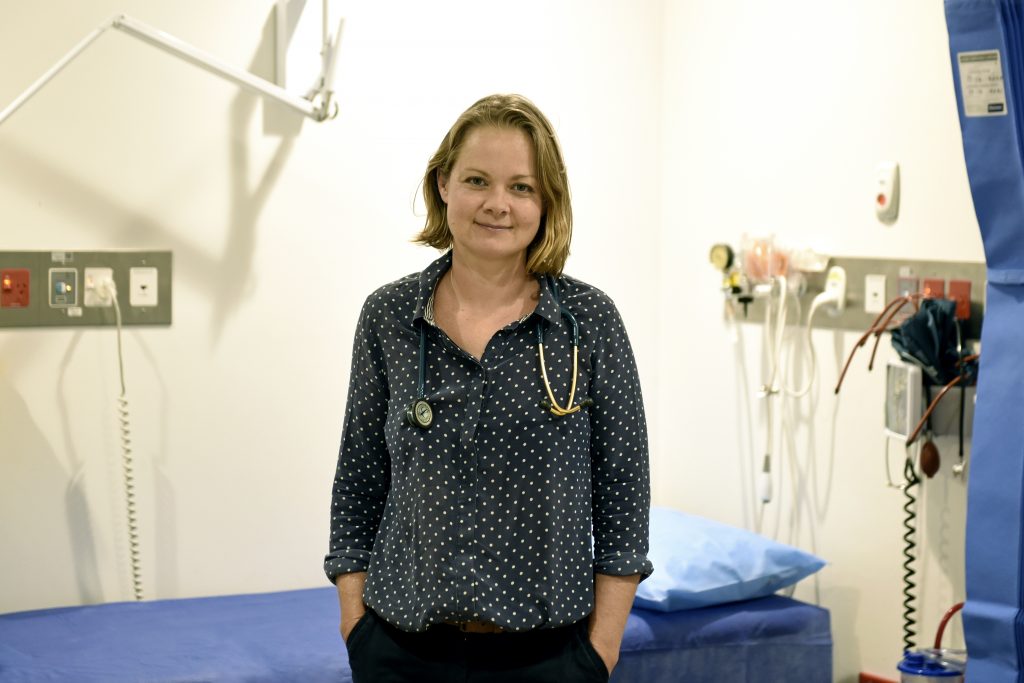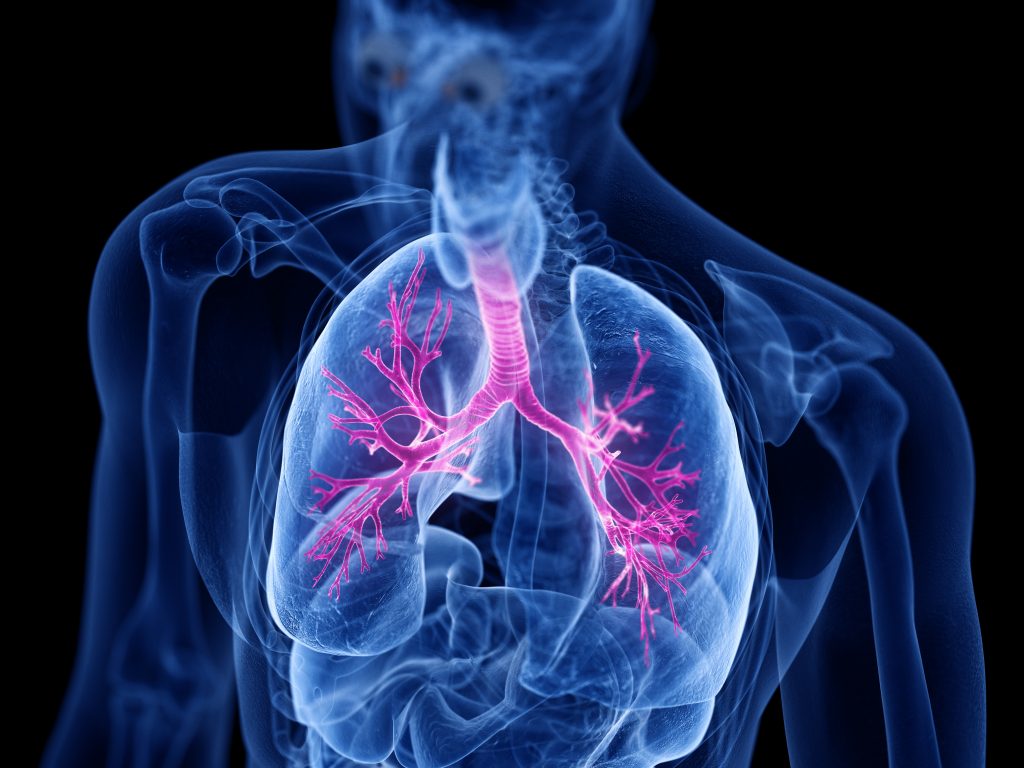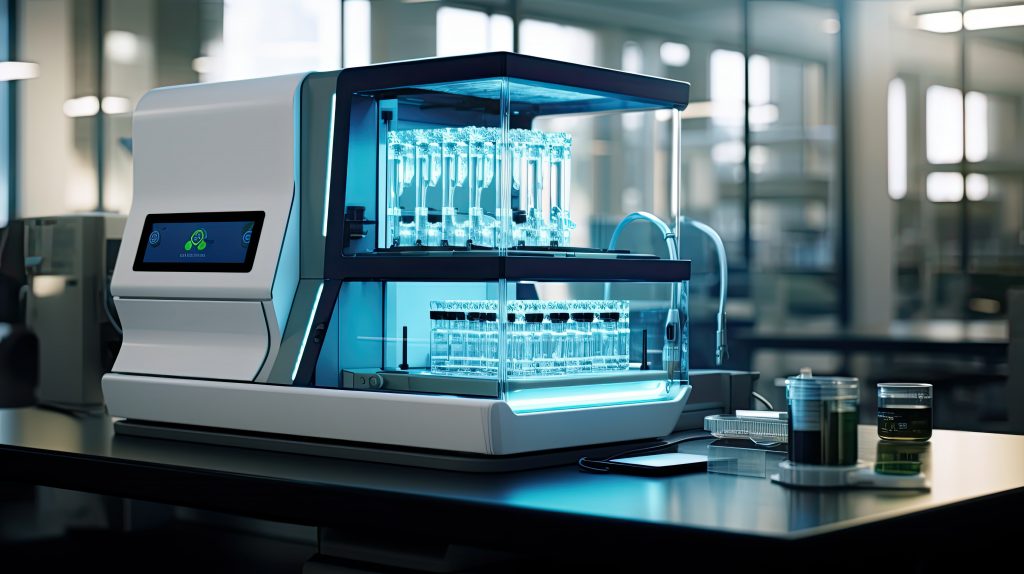Spotlight on: The patient diagnostic odyssey
To shorten the time it takes to detect and treat rare diseases, NSW Health is engaged in many different initiatives to help improve detection and patient outcomes.

From Grey’s Anatomy and House to ER, most TV programs about medicine depict doctors solving a patient’s mystery illness or mystery complications. By the closing credits, the cause of the medical issue has usually been identified and the perfect treatment provided. Yet in reality, diagnosing rare diseases can be a lengthy process. This is called the ‘Diagnostic Odyssey’ – which is the time and journey it takes from when the suspected first symptoms appear, to making an accurate diagnosis. Patients who embark on a diagnostic odyssey usually have a rare disease and rare diseases often affect multiple organs.
Research shows that trying to pin down the name and nature of these conditions can often take four to six years. “During that time, a specialist or group of health experts will often feel there is an underlying condition causing a major symptom or cluster of symptoms,” says Dr (Elizabeth) Emma Palmer, a paediatrician and Clinical Geneticist at Sydney Children’s Hospitals Network. “But without a diagnosis, the patient may undergo multiple tests which may not shed light on the cause. They may also be given a range of different treatments that may be ineffective or even harmful. As rare diseases are by their very nature uncommon and complex, they are challenging for health professionals to diagnose and manage independently due to lack of specialist knowledge around the conditions and lack of expert multidisciplinary clinics and evidence-based treatment recommendations.” Dr Palmer is a key stakeholder in the delivery of the NSW Health Genomics Strategy. NSW Health is committed to building adaptive and agile services to meet population needs while adopting genomics technologies that maximise health outcomes, to realise the promise of personalised medicine for the benefit of the NSW population.

How rare are rare diseases?
In Australia, a rare disease is generally defined as a condition that affects less than five in 10,000 people. But the word ‘rare’ can be misleading, because collectively, a large number of people are actually affected. Worldwide, rare diseases are diagnosed in a staggering 250 million people, though research has estimated that figure is more likely to be around 300 million. An estimated two million people are affected in Australia (which is 8% of our population).
There are over 7,000 recognised individual rare diseases. Around 80% of them have an underlying genetic cause and most of them begin in childhood. “Rare diseases are the biggest killer of kids,” says Palmer. “In developed countries, such as Australia, more than 60% of childhood deaths are of children who have an underlying rare disease. A third of all children with a rare genetic condition die before reaching their fifth birthday.”
Examples of rare diseases include conditions such as cystic fibrosis (which affects the lungs and other organs), childhood cancers and childhood dementias. Rare diseases presenting in adulthood include autoimmune diseases such as scleroderma (which affects connective tissue) and dermatomyositis, (which causes muscle inflammation) as well as later onset genetic conditions such as Huntington’s disease (a progressive neurological condition). The conditions tend to be chronic and debilitating and may be life-threatening and have limited treatment options. “Most treatments work best right at the start of the condition or in the early stages,” Palmer points out. “So during the diagnostic odyssey, the patient may miss the opportunity to have a targeted treatment that might radically change their health outcomes. They may also miss out on valuable health checks that would indicate the need for urgent interventions such as surgery that could prevent worsening of symptoms.”

Genomic testing
Ten years ago when Palmer first started working as a Clinical Geneticist, “We would ask the question – what is this rare condition and only get an answer for around 4 to 5 % of families,” she recalls. In the last decade, genetic testing has moved ahead in leaps and bounds. “Though the mapping of the human genome showed we have around 20,000 genes, we are still learning what over half of them do,” Palmer says. “Yet we are detecting new genetic conditions faster, so what we knew last week is rapidly out of date.’’
Several ‘next-gen sequencing’ techniques enable large amounts of DNA to be rapidly sequenced, which is helping to shorten the diagnostic odyssey for some patients. A ‘chromosomal microarray’ provides a comprehensive scan of a patient’s chromosomes, which can detect small chromosomal changes that may lead to a health condition. Another approach called ‘whole exome sequencing’ identifies the exons – pieces of a person’s DNA that give instructions to the body about how to make proteins. “This sequencing method is a little like reading through all the DNA letters and finding the one or two variants in that patient’s genetic make-up which could provide the explanation for that individual’s condition,” says Palmer.
The Office for Health and Medical Research (OHMR) has long invested in cutting-edge diagnostic approaches. “Thanks to funding from OHMR we were able to apply the new technology of whole genome sequencing to interrogate the DNA code of children with severe early onset epilepsies,” says Palmer. “This pushed up the diagnostic rate considerably and led us to discover new genetic causes for these rare diseases, opening up more tailored support for those children and connections for their families. NSW Health also supports newborn screening – for example, the ‘heelprick’ blood test, which can detect treatable genetic conditions before their symptoms worsen, saving lives and improving outcomes lifelong.”

Making sense of genomic complexity
Genetic tests study specific genes within a patient, while ‘genomics’ is the study of a patient’s entire genome and how it impacts conditions such as cancer and heart disease. “It is wonderful to have these incredible genomic diagnostic tests which we didn’t have when I started in this field a decade ago, especially as they are now so much more personalised and comprehensive,” Palmer says. “But they can also reveal unexpected results.” Test results can discover ‘incidental findings’ 2-3% of the time. For example, a family doing a genomic test to try to find the cause of their child’s severe intellectual disability may then suddenly learn that their child also has a predisposition to breast cancer. “The results of these very detailed tests are also often uncertain,” says Palmer. “We may find that there is a genetic variant but a lab can’t actually say whether this is the cause of the rare disease or not. And at least half the time, even though we are convinced a person has a rare genetic condition, the genomic testing still does not find the answer, due to limits in our knowledge and tests. So at every step along the way, the family should be offered expert support, including genetic counselling and information that is easy to understand.”
Families at the frontline
Individuals and their families affected by rare disease may face many roadblocks and challenges during a diagnostic odyssey. They can spend years dealing with unexplained health issues, no diagnosis or an incorrect diagnosis. If the condition is finally confirmed, the patient and their family may still be faced with no treatment, very limited treatment options or treatments that are very new and largely untried. As their disease is rare, little may be known about the best kind of specialised care that is needed to improve health outcomes for that condition.
“Going through this diagnostic odyssey is often a very stressful process,” Palmer points out. “It usually means that families are bouncing from one specialist to another with no definitive diagnosis and sometimes not even a potential diagnosis. When this happens, health experts cannot say, ‘this is the path you are on, this is the condition affecting your loved one and this is what we know about the condition and the best treatment or management options’. Instead, the patients and those who love and care for them can feel very much in the dark – sometimes for years.”
Understandably, all these unknowns can cause uncertainty and fear. This can leave the patient and their parents, carers, partners and relatives feeling very burned out and worried about what health impacts might be around the next corner. “They may feel they lack sufficient support both medically and emotionally,” Palmer observes. “Families may also sometimes be treated by some clinicians, relatives and friends, as though they could be fabricating or exaggerating symptoms. If this happens, the distress of the patient and family may be greatly intensified as they feel invalidated and that their needs and symptoms are being dismissed or minimised. So it’s unsurprising that rare disease commonly impacts people’s mental health, as highlighted in the National Strategic Action Plan for Rare Disease.”
In her work, Palmer has been involved in many interviews and discussions with families of people with a rare disease. “What they say is most helpful is when a doctor stays on the journey with them and then they feel they have an advocate,” she explains. “Families realise that doctors don’t have all the answers but appreciate it when doctors say, ‘bring me your research and we will look at it together and I will reach out to experts on your behalf’.”
NSW Health is committed to improving the accessibility of information for all. Going forward, more is being done to ensure that health professionals know how beneficial it is to connect families with patient support organisations, who in turn, can help connect families to others on a similar journey, reducing isolation and reducing uncertainty. The NSW Government also supports Genetic Alliance Australia (GAA) a NSW-based national organisation for individuals and families affected by a rare genetic disease.

Joining the dots
Putting together all the pieces of the puzzle of a rare disease may require doctors to think outside the box and take a different approach to diagnosis. “We have been doing a lot of work in the educational space to give clinicians the equivalent of a pattern book of signs to help them recognise when symptoms could indicate a rare disease and if so, then what to do, because it requires a different approach,” says Palmer. “This could be a child who first presents with multiple congenital differences such as a heart condition, then later some developmental delays and further down the track, a kidney problem too. Those things together are a red flag for a genetic rare disease.”
Rather than addressing each symptom at a time, it can be helpful for a clinician to consider if the condition could be a rare disease and then consult with a Clinical Geneticist if an underlying genetic rare disease is suspected. “The NSW Health Centre for Genetics Education is a great starting point as it lists all the genetic services across Australia,” says Palmer. “It provides clinicians with online learning modules, information, fact sheets and other resources, as well as information that may be useful for families to help them navigate the genetic and genomic testing processes.”
Midnight meetings with overseas specialists
Research is critical to advancing solutions for rare diseases. Palmer has helped develop the research program Gene2Care with colleagues across Sydney Children’s Hospitals Network. This is a research program designed to help connect families with genetic diagnoses, research opportunities and new advances in therapies. It includes GeneAdd, a Sydney Children’s Hospitals Network undiagnosed disease program. This facilitates access to diagnostic research across the state for undiagnosed families, for example through collaborations with the Garvan Institute in NSW, as well as research collaborations with colleagues across the country and internationally.
Palmer also co-chairs the diagnostic working group for the Undiagnosed Disease Network International. This meets monthly to discuss patients all over the world, in an effort to shorten their diagnostic odyssey. “You can’t possibly be an expert in every condition, so it is extremely valuable to have a sounding board and brains trust to help get collective answers about individual undiagnosed families and provide expert opinions for research projects,” says Palmer. Through this collaboration the network may confirm that a family in Australia, in the US and also in Sweden have variants in the same gene and very similar clinical features – which may lead to the discovery of a new genetic condition. “My clinical genetic colleagues and I often attend these online meetings late at night as they involve clinicians from all around the world,” says Palmer. “We discuss patients who have gone through their local undiagnosed disease program and still don’t have a diagnosis. It is amazing to be able to tap in to all these experts around the world who pool their thoughts.”
Clinical trials and experimental treatments
As some rare diseases can progress quite rapidly and most have limited treatment options, practicing ‘precision medicine’ is important to help ensure the right patient is matched to the most appropriate clinical treatment. Clinical trials are also an important step in proving novel precise therapies are both safe and effective. “Being offered the chance to join a clinical trial can offer some hope where families might have felt there was none,” says Palmer.
Gene and cell-based therapies are examples of precision medicine and NSW is a globally recognised leader in developing and delivering these therapies. The Viral Vector Manufacturing Facility currently being built at Westmead will support rare disease treatment by ensuring an ongoing supply of viral vectors. These are a little like taxis that deliver small pieces of genetic material directly into specific cells to help correct underlying changes in an individual’s genetic make-up that caused the rare condition. Access to viral vectors will be a game changer for Australian researchers working on ground-breaking gene therapies and will enable faster access to those therapies. These treatments will help to provide new possibilities for remission, improved quality of life and also long-term survival, for people with rare disease.
There is also a movement towards creating more Centres of Expertise for Rare Disease. “These are spreading globally and bring together expert clinicians, diagnostic, research and clinical trials expertise,” Palmer explains. “These centres are co-designed with input from people living with rare disease and provide person-centred support while helping to reduce fragmented care. They can help ensure that from the start of the diagnostic odyssey, the patient and their family receive wrap-around high-quality care.”
Updated 11 months ago